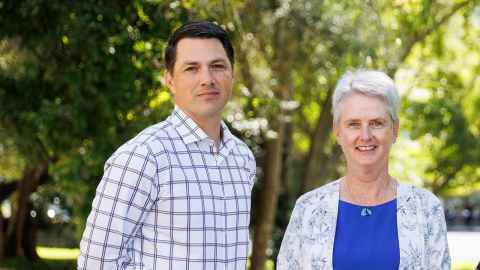Recognition for Liggins research into newborns with low blood sugars
24 March 2022
Two papers in the same edition of JAMA plus an editorial recognises importance of Liggins research into newborns with hypoglycaemia.

Newborns at risk of brain damage from low blood sugar levels are increasingly safe, as research at the University of Auckland’s Liggins Institute continues to break new ground, with two papers published in the same edition of the prestigious Journal of the American Medical Association (JAMA).
“The latest papers further build the body of evidence needed to help doctors understand how best to manage these babies, says Liggins Director Professor Frank Bloomfield.
“It is an incredible achievement to have two papers published in the JAMA and an editorial providing context for them,” says Bloomfield. “The findings from one of these papers is likely to be incorporated into clinical practice internationally, while the other points to where further research is needed, which also is invaluable.”
The papers contribute to scientific knowledge about newborns who are= either at risk of, or experiencing, low blood sugar levels (hypoglycaemia).
“In babies, glucose is the main source of energy for the brain, and episodes of low blood glucose after birth may have permanent adverse effects on thinking, learning and coordination,” says Associate Professor Chris McKinlay, corresponding author for the CHYLD Study paper, Association of Neonatal Hypoglycaemia with Academic Performance in Mid-Childhood (Shah et al).
“Babies generally have lower blood glucose levels than adults in the first 72 hours after birth, but the safe lower limits for at-risk babies have been unclear,” McKinlay says.
The CHYLD Study is the first large, prospective cohort study to follow a group of babies at-risk of low blood sugar levels after birth through to 9 to 10 years of age. At-risk babies included those born small, large, preterm or to mothers with diabetes, representing approximately 30 percent of all births.
“We found that, with regular screening and treatment to maintain blood glucose levels at or above 2.6 mmol/L, children affected by low blood glucose after birth, compared to those not so exposed, were able to achieve similar outcomes at mid-childhood, including executive function, visual motor function, emotional behavioural regulation and school achievement,” McKinlay says.
“This study has provided important guidance for managing babies at risk of low blood glucose and will be incorporated into national and international clinical practice guidelines,” he says.
The other paper, Prophylactic Oral Dextrose Gel and Neurosensory Impairment at 2-Year Follow-up of Participants in the hPOD Randomized Trial (Edwards et al.) investigated the development at two years of age in babies who took part in a trial that tested whether giving a single dose of dextrose gel soon after birth reduces the incidence of low blood sugar levels.
The earlier hPOD trial confirmed that the preventative dose of sugar gel did reduce the number of children who developed low blood glucose levels, says corresponding author Professor Dame Jane Harding.
“This follow-up study was intended to find out if this made any difference to development at two years of age” Dame Jane says. “We found that there was no difference between babies who received the sugar gel and those who received placebo in the rate of developmental problems at two years.
“This might mean that the gel did not have enough of an effect on blood sugar levels to make a difference, or it might mean that two years was too young to detect any benefit if there is one,” she says. “We are currently assessing these children at six to seven years of age to check this.”
An editorial in the same edition of JAMA reinforces the importance of the papers for informing how neonatal hypoglycaemia can be understood and managed.
Dr Paul Rozance discusses previous research and highlights the fact many questions are still to be answered, including understanding the relationship between hypoglycaemia and brain damage.
He concludes “However, the reports by Shah et al and Edwards et al in this issue of JAMA provide important new data about the clinical importance and management of neonatal hypoglycaemia and subsequent neurodevelopmental outcomes.”
Papers cited
Shah R, Dai DWT, Alsweiler JM, Brown GTL, Chase JG, Gamble GD, Harris DL, Keegan P, Nivins S, Wouldes TA, Thompson B, Turuwhenua J, Harding JE, McKinlay CJD for the Children with HYpoglycaemia and Their Later Development (CHYLD) Study team. Association of neonatal hypoglycemia with academic performance in mid-childhood. JAMA 327: 1158-1170, 2022. doi:10.1001/jama.2022.0992
Edwards T, Alsweiler JM, Crowther CA, Edlin R, Gamble GD, Hegarty JE, Lin L, McKinlay CJD, Rogers JA, Thompson B, Wouldes TA, Harding JE. Prophylactic oral dextrose gel and neurosensory impairment at 2-year follow-up of participants in the hPOD randomized trial. JAMA 327: 1149-57, 2022. doi:10.1001/jama.2022.2363
Editorial: Rozance PJ. Hypoglycemia in the newborn and neurodevelopmental outcomes in childhood. JAMA 327: 1135-1136, 2022.
Media enquiries
Jodi Yeats media adviser
M: 027 202 6372
E: jodi.yeats@auckland.ac.nz